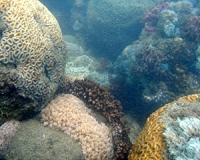| . |  |
. |
Victoria, Australia (SPX) Jul 29, 2010 Archaeological research in East Timor has unearthed the bones of the biggest rat that ever lived, with a body weight around 6 kg. The cave excavations also yielded a total of 13 species of rodents, 11 of which are new to science. Eight of the rats weighed a kilogram or more. "East Indonesia is a hot spot for rodent evolution. We want international attention on conservation in the area," CSIRO's Dr Ken Aplin says. "Rodents make up 40 per cent of mammalian diversity worldwide and are a key element of ecosystems, important for processes like soil maintenance and seed dispersal. Maintaining biodiversity among rats is just as important as protecting whales or birds." Carbon dating shows that the biggest rat that ever lived survived until around 1000 to 2000 years ago, along with most of the other Timorese rodents found during the excavation. Only one of the smaller species found is known to survive on Timor today. "People have lived on the island of Timor for over 40,000 years and hunted and ate rats throughout this period, yet extinctions did not occur until quite recently," Dr Aplin says. "We think this shows people used to live sustainably on Timor until around 1000 to 2000 years ago. This means extinctions aren't inevitable when people arrive on an island. Large scale clearing of forest for agriculture probably caused the extinctions, and this may have only been possible following the introduction of metal tools." Each of the islands of eastern Indonesia evolved it own unique collection of rats. Dr Aplin has also found six new rat species in a cave on the island of Flores. Some of these might still be living on Flores but they have evaded detection by modern collectors and further surveys are urgently needed. Timor has few native mammals, with bats and rodents making up the majority of species. Most of Timor today is arid, transformed from the lush rainforests of the past. But there is still room for imagination. "Although less than 15 per cent of Timor's original forest cover remains, parts of the island are still heavily forested, so who knows what might be out there?" Dr Aplin says. "During a recent field trip in East Timor, I found the remains of a freshly dead rat which we knew about only from cave deposits." Until Dr Aplin finds a larger one, today's biggest rats weigh around 2kg and live in rainforest in the Philippines and New Guinea. 'Quaternary murid rodents of Timor' by Ken Aplin of CSIRO and Kris Helgen of the Smithsonian Institution was published this week in the Bulletin of the American Museum of Natural History.
Share This Article With Planet Earth
Related Links CSIRO Darwin Today At TerraDaily.com
 Scientists Test Moreton Bay As Coral 'Lifeboat'
Scientists Test Moreton Bay As Coral 'Lifeboat'Queensland, Australia (SPX) Jul 28, 2010 An international team of scientists has been exploring Moreton Bay, close to Brisbane, as a possible 'lifeboat' to save corals from the Great Barrier Reef at risk of extermination under climate change. In a new research paper they say that corals have been able to survive and flourish in the Bay, which lies well to the south of the main GBR coral zones, during about half of the past 7000 y ... read more |
|
| The content herein, unless otherwise known to be public domain, are Copyright 1995-2010 - SpaceDaily. AFP and UPI Wire Stories are copyright Agence France-Presse and United Press International. ESA Portal Reports are copyright European Space Agency. All NASA sourced material is public domain. Additional copyrights may apply in whole or part to other bona fide parties. Advertising does not imply endorsement,agreement or approval of any opinions, statements or information provided by SpaceDaily on any Web page published or hosted by SpaceDaily. Privacy Statement |